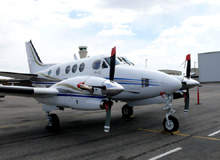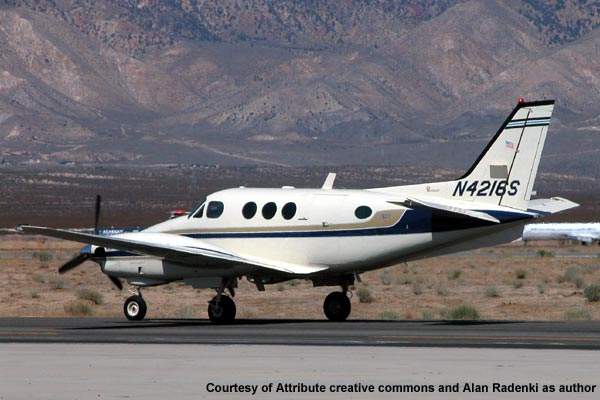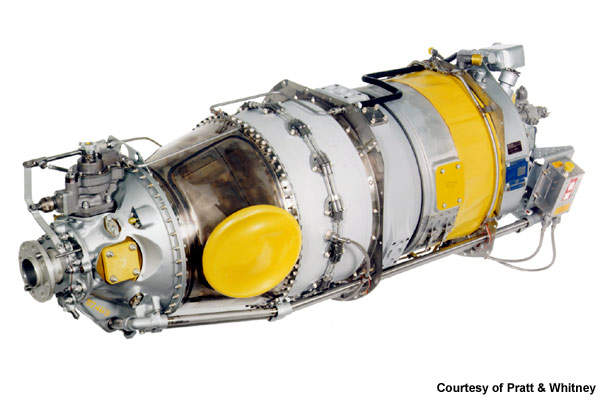The King Air C90GTi is a twin-turbine aircraft in the King Air 90 series, principally developed for the US Navy. Derived from the King Air GT model, the aircraft was designed and manufactured by Hawker Beechcraft Corporation (HBC), US, to meet the requirements of the US Navy, Saudi Arabia Government Agency, Royal Flying Doctor Service of Australia and the US Federal Aviation Administration (FAA).
The C90GTi’s maiden flight took place in May 1963 and it entered into service on 9 September 1964. The aircraft has state-of-the-art digital capabilities, including capturing, processing and displaying.
King Air C90GTi aircraft variants
The King Air C90GTi is followed by a single variant, the King Air C90GTx. Based on the C90GTi model, the variant is an advanced model with an enhanced payload and performance. It was developed by increasing the maximum ramp and take-off weights to 10,545lbs and 10,485lbs respectively.
The new aircraft’s range has been increased by 200nm and it has a fuel payload capacity of 750lbs. Additional features include a turbulence-detecting Doppler weather radar and wide area augmentation system global positioning system (WAAS GPS) equipment.
King Air advanced aircraft orders and deliveries
In July 2009, the FAA awarded a contract to HBC to supply four King Air C90GTi aircraft and two optional to support its flight standards flight programme (FSFP). The programme has directly supported over 600 aviation safety operations inspectors (ASIs) to assess the currency and proficiency of pilots throughout the country.
HBC delivered four King Air C90GTi aircraft to the FAA on 15 December 2009 during the delivery ceremony held at its headquarters in Wichita, Kansas, US. All four aircraft will be upgraded with the latest King Air 90x package in early 2010, which includes improvements to payload and performance at HBC’s factory-owned service centre, Hawker Beechcraft Services.
The Saudi Arabia Government Agency has placed an order for six King Air C90GTi aircraft with HBC. The deliveries of the aircraft have begun and will conclude in 2009-10. They will be used for performing vital meteorological activities.
Beechcraft King Air C90GTi flight deck
The flight deck of Beechcraft King Air C90GTi features a fully integrated Collins Pro Line 21 avionics suite. The aircraft can be operated with a single pilot. It is equipped with three large-format liquid crystal displays (LCDs) for exhibiting intuitive and flight-critical information.
C90GTi aircraft cabin
The King Air C90GTi’s cabin features a wide airstair door for entry and exit of passengers. The cabin is almost 50% larger than conventional very light jets (VLJ). The spacious and comfortable cabin can accommodate seven passengers.
The aircraft cabin comprises refreshment cabinets, lavatories and a large pressurised baggage storage area for passengers’ luggage. The baggage area is fully accessible to passengers in flight.
King Air C90GTi avionics
The King Air C90GTi is equipped with Rockwell Collins’ Pro Line 21 avionics suite, which encompasses digital radio and audio systems, multi-sensor flight management systems (FMS) that utilise several aircraft position inputs, solid-state weather radars, Rockwell Collins’ automated chart-selection system to reduce the workload of the pilot, monitoring of onboard systems and XM satellite weather, universal graphic weather for international operations, and a Rockwell Collins HF radio.
Other avionics include a global positioning system (GPS), traffic collision avoidance systems (TCAS), terrain awareness and warning system (TAWS), a high-speed USB database loader and integrated flight information systems (IFIS), which provides pilots with a wide range of tools. The tools encompass map overlays and electronic Jeppesen charts to enhance safety and situational awareness.
Advanced business / trainer aircraft engine
The aircraft is powered by a single Pratt & Whitney Canada PT6A-135-A turbojet engine. The engine is capable of producing 750shp (559kW) of power and flat-rating power of 410kW.
The PT6A-135-A engine is principally used in business jets and airline aviation. It can drop cargo in the Antarctic darkness at 75° below zero. The length and diameter of the engine are 62m and 19m respectively.
C90GTi aircraft performance
The King Air C90GTi can climb at the rate of 10.2m/s. The maximum and cruise speeds of the aircraft are 500km/h and 416km/h respectively. It has a maximum range of 2,446km with service ceiling of 9,144m.
The aircraft weighs around 3,243kg and has a maximum take-off weight of 5,352kg. It is fuel-efficient and operates at a low cost.






